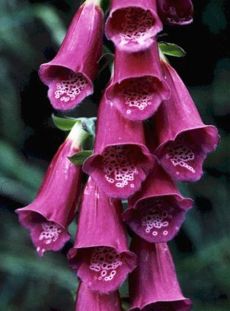This is a slightly modified version of some thoughts from the old improbable science page, where they formed part of the review of a BBC2 series on alternative medicine. It has been moved to the new blog because of the comments posted here.
Evolution of plants
Plants didn’t evolve for our benefit. Natural selection ensures that plants, like every other living thing, evolve in a way that maximises their own chance of survival. To ensure that, plants should be as toxic as possible to anything that might eat them. The more harm a plant does to humans, the better its chance of survival. It is sheer luck that some of the toxic principles evolved by plants occasionally turn out to be useful.
| Memo to: The members of the Kansas Board of Education From: God Re: Your decision to eliminate the teaching of evolution as science Thank you for your support. Much obliged. Now, go forth and multiply. Beget many children. And yea, your children shall beget children. And their children shall beget children, and their children’s children after them. And in time the genes that made you such pinheads will be eliminated through natural selection. Because that is how it works.’ . . . ; By Gene Weingarten, Washington Post Staff Writer. Saturday, August 14, 1999; Page C01 |
Naturalness
Here are some products of nature. That doesn’t mean they are good for you.
Lead, uranium, radon, arsenic, thallium, strychnine, cyanide (in Sorghum and Prunus species), Stinging nettles, poison ivy, yew, deadly nightshade, castor beans (ricin), tobacco, curare, foxglove, fly agaric, (muscarine), death cap (amanita phalloides), . . ..
Foxgloves, heart failure and biological standardisation
Here is a bit of relevant pharmacological history.
The 24th edition of Martindale’s Extra Pharmacopoeia (1958) describes Digitalis Leaf (B.P., I.P.), also known as Digit. Fol.; Digitalis; Foxglove Leaf; Feuille de Digitale; Fingerhutblatt; Hoja de digital.
| It was defined as “the dried leaves of Digitalis purpurea (Scrophulariaceae).”At that time it was sometimes prescribed as Prepared Digitalis (BP), which is “Digitalis leaf reduced to powder, no part being rejected, and biologically assayed the strength being stated in units per g. For therapeutic purposes it must be adjusted to contain 10 units in 1 g.”Sometimes foxglove leaf was prescribed as Tincture of Digitalis (B.P., I.P.). “It may be made from unstandardised leaf, the tincture being subsequently biologically assayed, or it may be made from prepared digitalis, using a quantity containing 1000 units per litre, by percolation or maceration, with alcohol (70 %). It contains 1 unit per ml. I.P. allows also 1 unit per g. Dose: 0.3 to 1 ml. (5 to 15 minims). ” |
 |
Although these preparations are now totally defunct, they were still better than the sort of thing that is now advocated by herbalists. Why? They were better because they were standardised.
Foxglove leaves contain several chemical compunds that are useful in certain forms of hear failure. But the margin of safety is quite low. Take a bit too much and it kills you not cures you. One batch of foxglove leaves will contain different amounts of active compounds from the last batch, and that endangered patients.
From the 1930s onwards, pharmacologists developed methods of biological assay that overcame this problem. An international
standard digitalis leaf sample was established. Every new batch had to be assayed against this standard, and diluted to a fixed level of biological activity. This ensured that each batch of digitalis powder had the same biological potency as the last batch. It was a great pharmacological advance in its time. But of course it did involve the use of animals for the biological assay.
All this was solved when the active principles were purified from the foxglove leaves. There was no longer any need to uses animals for biological assays. The right amount of pure digoxin or digitoxin could be weighed out.
Fortunately herbalists are not allowed to prescribe anything as potentially dangerous as digitalis. But in general herbalists are happy to use pre-1930, unstandardised plant extracts.
I can think of no case in which there is the slightest reason to think that the mixture of chemicals in the plant is any better than the purified active principles. Of course there could be such cases of synergy. But that is just idle speculation.
No surprise there then, because idle speculation is the stuff of alternative medicine. It’s a great deal easier than making the effort to find out what works, and probably more lucrative too.


[…] Chinese medicine as traditionally practised. Nothing would be done about one of the major dangers, the lack of standardisation. That is a problem that was solved by pharmacologists in the 1930s, when international standards […]
[…] have pharmacological actions, with all the possibilities for good and for harm that implies (see Plants as medicines). It would be quite possible to teach about the plant constituents and their actions in an […]
[…] Straight after the war (when he had seen the problem of malaria at first hand) he went to work at the Wellcome Research Labs in Beckenham, Kent. The first head of the Wellcome Lab was Henry Dale. It had a distinguished record of basic research as well as playing a crucial role in vaccine production and in development of the safe use of digitalis. In the 1930s it had an important role in the development of proper methods for biological standardisation. This was crucial for ensuring that, for example, each batch of tincture ot digitalis had the same potency (it has been described previously on this blog in Plants as Medicines. […]